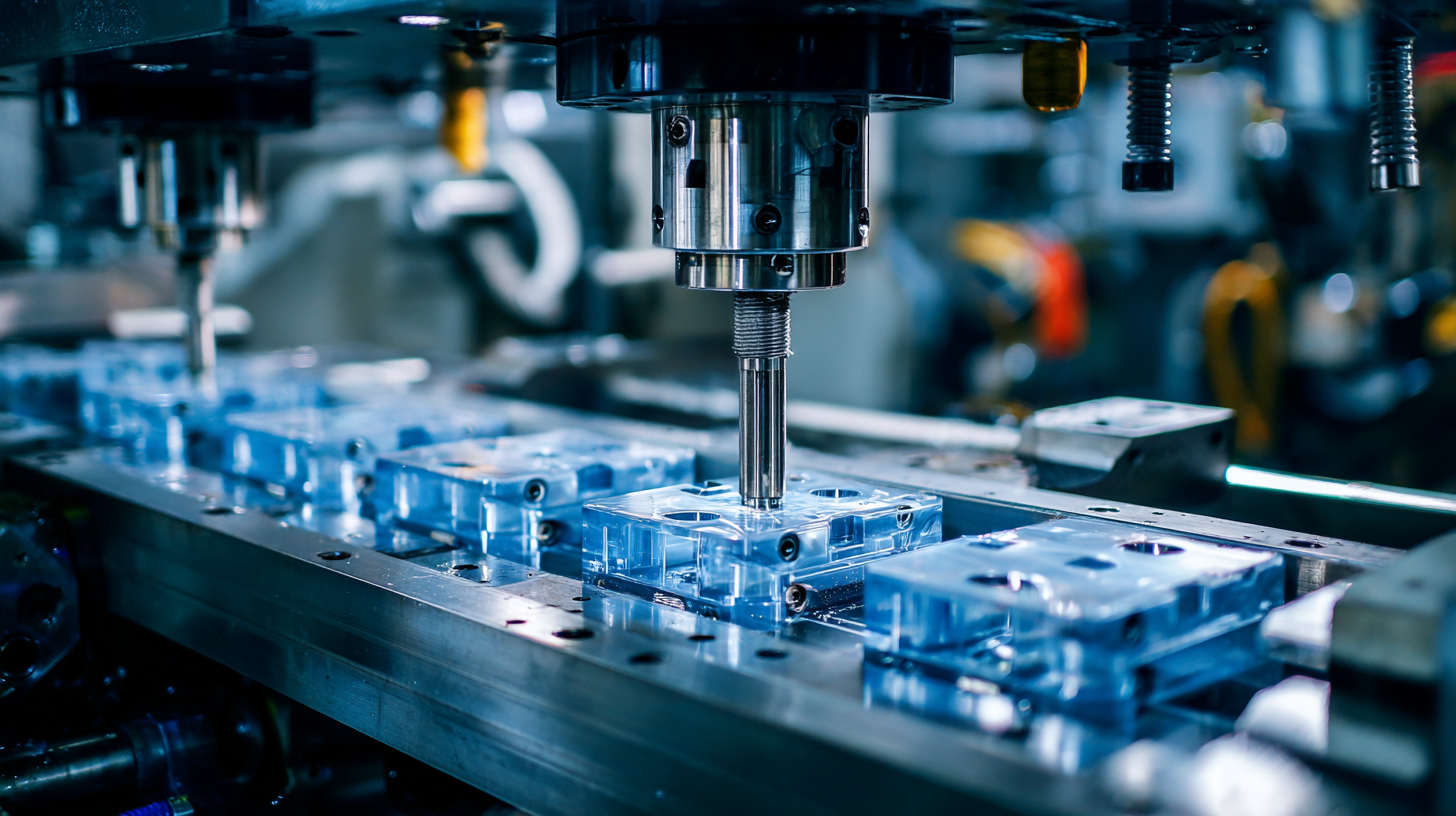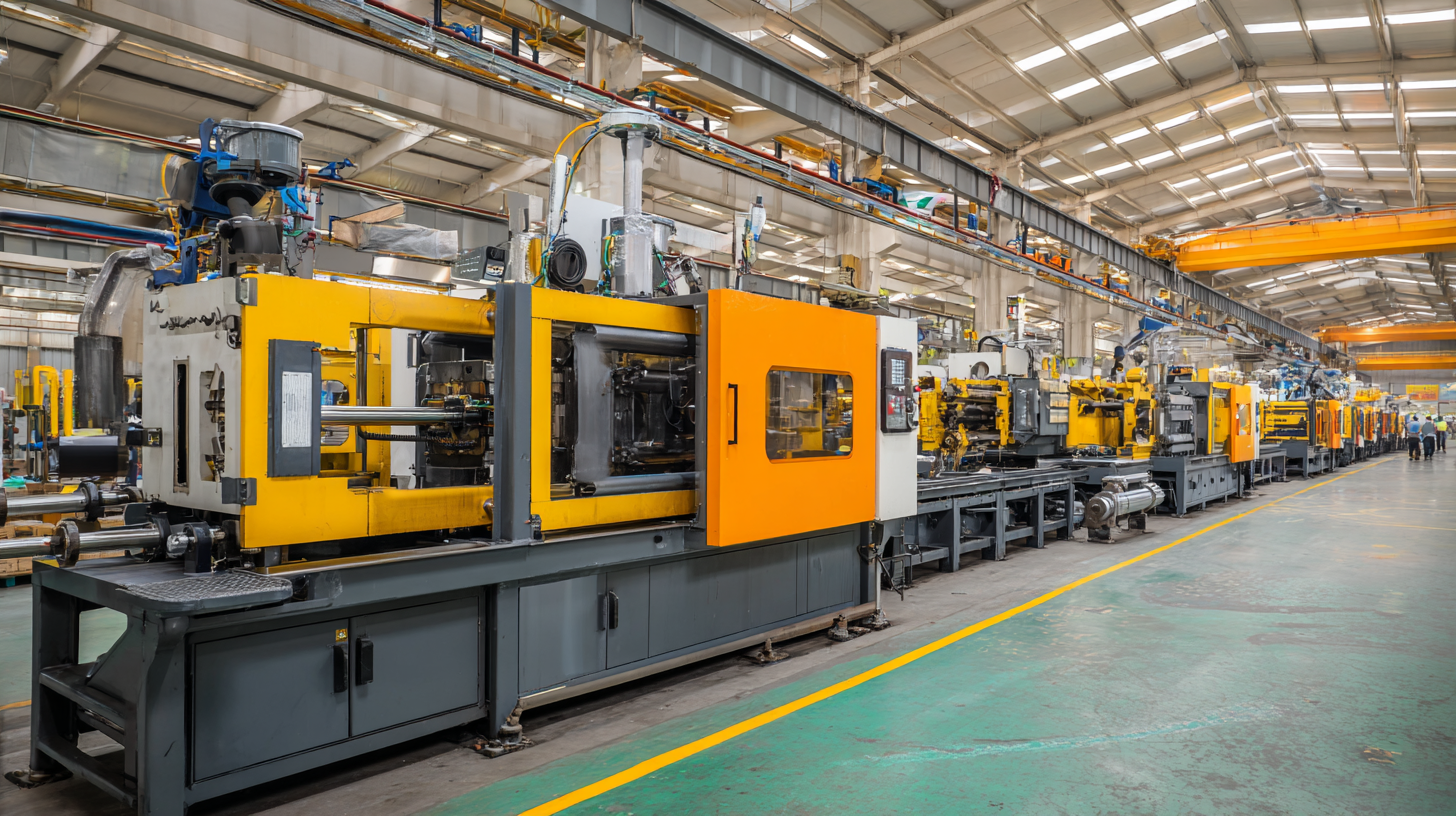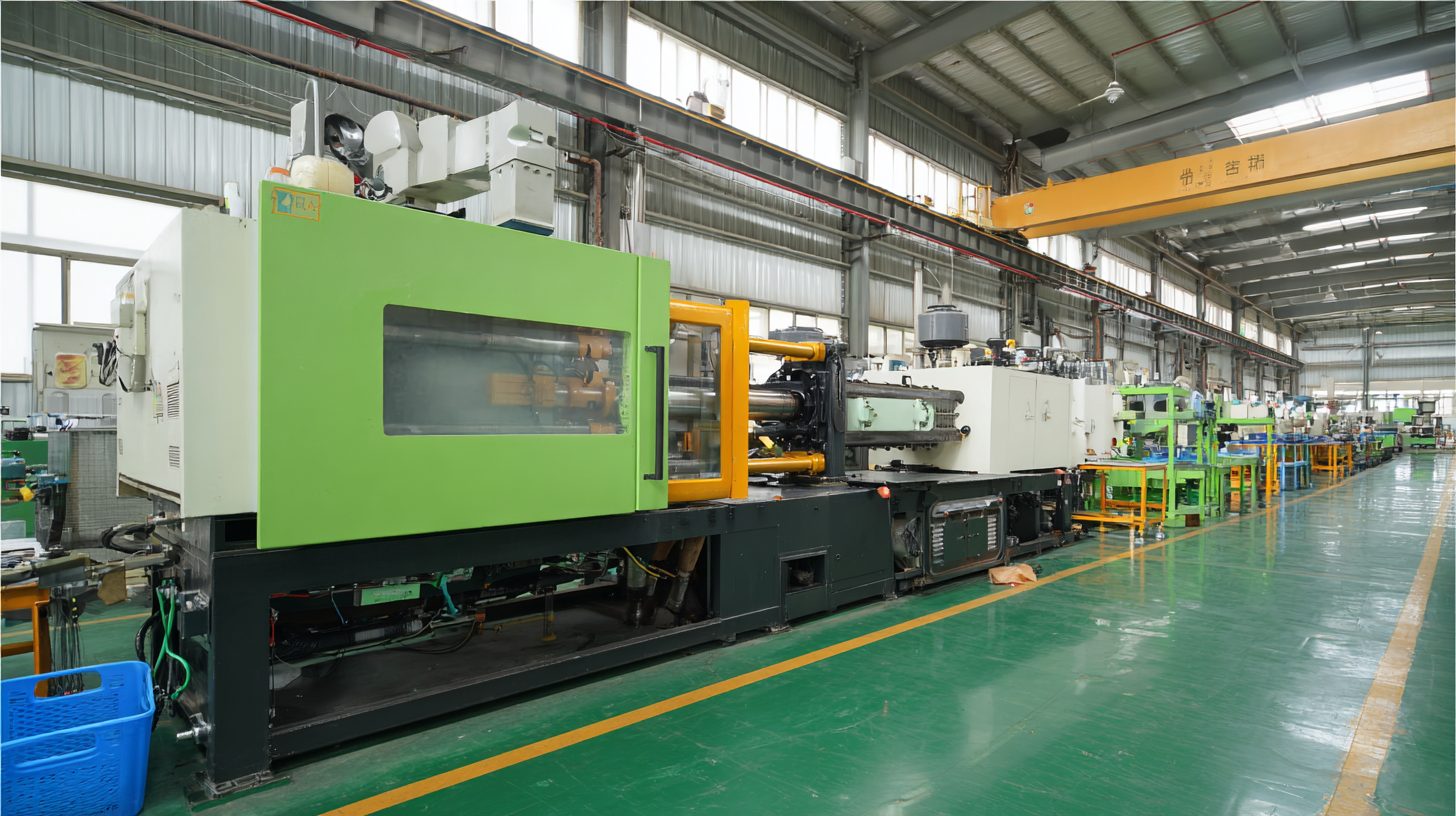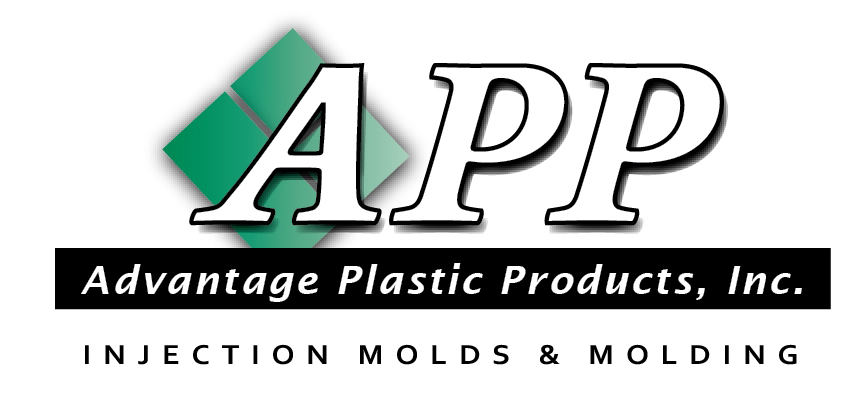Common Challenges in the Best Plastic Injection Moulding Process
 The plastic injection moulding process is a cornerstone of modern manufacturing, widely used for producing intricate parts across various industries, including automotive, consumer goods, and healthcare. According to a recent report by Grand View Research, the global plastic injection moulding market is expected to reach USD 346.6 billion by 2028, driven by the increasing demand for lightweight and durable components.
However, achieving high efficiency and quality in this process is fraught with challenges. Issues such as precise temperature control, material selection, and tooling design can significantly impact the final product's integrity and production costs. As manufacturers strive to enhance productivity while mitigating defects, understanding the common challenges associated with the plastic injection moulding process becomes essential for sustaining competitive advantage in the marketplace.
The plastic injection moulding process is a cornerstone of modern manufacturing, widely used for producing intricate parts across various industries, including automotive, consumer goods, and healthcare. According to a recent report by Grand View Research, the global plastic injection moulding market is expected to reach USD 346.6 billion by 2028, driven by the increasing demand for lightweight and durable components.
However, achieving high efficiency and quality in this process is fraught with challenges. Issues such as precise temperature control, material selection, and tooling design can significantly impact the final product's integrity and production costs. As manufacturers strive to enhance productivity while mitigating defects, understanding the common challenges associated with the plastic injection moulding process becomes essential for sustaining competitive advantage in the marketplace.
Industry Applications of Plastic Injection Moulding: Key Case Studies
In the plastic injection moulding industry, various applications highlight the significance of this versatile process, driving innovations and growth across sectors. From automotive to consumer goods, companies leverage plastic injection moulding to produce complex, high-precision components efficiently. Notable case studies illustrate how industries implement these processes to improve product design and reduce manufacturing costs while maintaining quality. For instance, the automotive industry has increasingly relied on injection moulding for lightweight components that enhance fuel efficiency and performance.
The India injection molded plastic market exemplifies the expanding opportunities within this sector. Projected to reach an impressive USD 27.84 billion by 2024, with a steady growth rate of 5.5% annually until 2030, this market reflects the growing demand for efficient manufacturing solutions in the region. Additionally, the global injection molding machines market is also on the rise, with revenue estimates soaring from USD 17.56 billion in 2025 to USD 25.78 billion by 2033. This growth underscores the importance of injection moulding as a key driver of innovation and efficiency in plastic manufacturing across numerous industries.
Common Challenges in the Best Plastic Injection Moulding Process - Industry Applications of Plastic Injection Moulding: Key Case Studies
| Challenge | Description | Industry Application | Key Solutions |
|---|---|---|---|
| Material Selection | Choosing the right plastic material for product durability and performance. | Consumer Goods | Conducting thorough material research and testing. |
| Mould Design | Creating efficient mould designs that minimize defects. | Automotive Parts | Utilizing CAD software for precise mould modeling. |
| Cycle Time | Reducing the time taken for each injection cycle without compromising quality. | Electronics Housing | Implementing efficient cooling systems in moulds. |
| Defects and Quality Control | Addressing issues such as warping, sink marks, and air traps. | Medical Devices | Regular inspections and advanced monitoring technology. |
| Cost Efficiency | Managing production costs while maintaining high-quality standards. | Packaging | Optimizing production processes and materials usage. |
Identifying Common Challenges in Plastic Injection Moulding Processes
 Plastic injection moulding is a widely adopted manufacturing process known for its efficiency and precision. However, like any method, it presents specific challenges that can impact the final product's quality and the overall efficiency of production.
One common issue faced in plastic injection moulding is inconsistent temperature control. Variations in the material temperature can lead to defects such as warping, poor surface finish, or structural weaknesses. Maintaining a stable thermal environment throughout the moulding process is crucial for achieving high-quality outcomes.
Plastic injection moulding is a widely adopted manufacturing process known for its efficiency and precision. However, like any method, it presents specific challenges that can impact the final product's quality and the overall efficiency of production.
One common issue faced in plastic injection moulding is inconsistent temperature control. Variations in the material temperature can lead to defects such as warping, poor surface finish, or structural weaknesses. Maintaining a stable thermal environment throughout the moulding process is crucial for achieving high-quality outcomes.
Another prevalent challenge is material selection and compatibility. Different plastics have distinct properties, and selecting the wrong type can lead to issues such as incomplete fill, poor adhesion, or excessive shrinkage. It is essential for manufacturers to thoroughly understand the characteristics of various materials and how they interact with the mould and the cooling process.
Furthermore, poor design of the mould can exacerbate these issues, often resulting in longer cycle times and increased production costs as adjustments and repairs become necessary. Addressing these challenges requires a combination of careful planning, expert knowledge, and continuous monitoring throughout the production cycle.
Best Practices for Optimizing Plastic Injection Moulding Efficiency
Optimizing the efficiency of the plastic injection molding process is essential for manufacturers aiming to maximize productivity and minimize costs. One key practice is to ensure precise temperature control throughout the process. Maintaining optimal temperatures for both the mold and the polymer can significantly affect the flow characteristics of the material, reducing cycle times and enhancing the quality of the final product. Regular monitoring through thermocouples and the use of advanced temperature control systems can help achieve this.
Another best practice is to select the right injection speed and pressure settings. These parameters can influence not only the surface finish of the molded parts but also the overall cycle time. By conducting thorough testing and utilizing simulation software, manufacturers can find the ideal settings tailored to their specific materials and designs. Additionally, investing in high-quality molds and maintaining them diligently can lead to sustained efficiency, reducing wear and tear, and minimizing downtime for repairs. Implementing these best practices ensures that manufacturers can enhance their injection molding efficiency, leading to better products and increased competitiveness in the market.

How to Overcome Quality Control Issues in Plastic Injection Moulding
Quality control is a critical aspect of the plastic injection moulding process, as even minor defects can lead to significant product failures. One common challenge is achieving uniform material flow during the injection phase. Variability in temperature and pressure can create inconsistencies, leading to defects such as warping or incomplete filling. To address this issue, manufacturers should invest in advanced monitoring systems that track these parameters in real-time. Implementing a robust process control strategy ensures that conditions remain stable, thus enhancing product quality.
Another prevalent challenge involves contamination during the moulding process. Foreign particles can compromise the integrity of the final products, resulting in costly rework or scrap. To mitigate this risk, it's essential to establish stringent cleanroom protocols and regular maintenance schedules for machinery. Routine inspections and thorough cleaning of moulding equipment can significantly reduce the likelihood of contamination. Training personnel on best practices in handling materials will further enhance quality control efforts, ensuring that each component meets the desired standards of excellence.
Innovative Solutions for Sustainable Plastic Injection Moulding Practices
In today’s manufacturing landscape, sustainable plastic injection moulding practices are increasingly essential. A recent report by the American Society of Plastic Engineers highlights that over 30% of all plastic waste comes from inefficient moulding processes. As companies strive for sustainability, innovative solutions are key. Optimizing energy consumption in injection moulding machines can lead to a 20% reduction in energy costs, making it both an economical and environmentally friendly choice.
One innovative solution involves the use of bio-based and recycled materials. In fact, studies from Plastics News show that integrating recycled materials into the injection moulding process can reduce the carbon footprint by up to 42%. However, achieving consistent quality can be challenging. To address this, manufacturers can implement advanced monitoring systems that track the quality in real-time, allowing for adjustments on-the-fly, thus ensuring product integrity while minimizing waste.
**Tip:** When considering sustainable materials, ensure they meet the necessary performance standards for your specific applications to avoid compromising quality.
Implementing circular economy principles is another effective strategy for sustainable practices. By designing for recyclability and creating closed-loop systems, businesses not only slash material waste but also gain a competitive edge. According to a McKinsey report, companies adopting circularity can unlock economic value worth up to $1 trillion in the plastic packaging sector alone.
**Tip:** Engage with suppliers who prioritize sustainable materials and practices to enhance your injection moulding efficiency and sustainability efforts.
